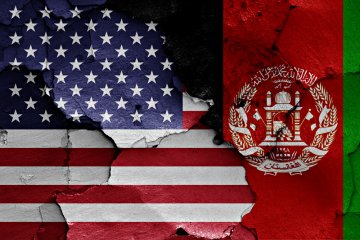Introduction
In 2023, Finnish-Russian relations underwent a pivotal shift marked by Finland’s unprecedented closure of all border crossings with Russia at the end of the year.[i] This sudden and stringent measure, attributed to mounting migratory concerns, reflects a broader reconfiguration of Moscow-Helsinki ties that had previously been characterized by pragmatism. Implemented within 24 hours, the closure impacted nine border points and redirected asylum seekers towards airports and ports.[ii] Notably, the crisis revealed an atypical migration trend of individuals transiting Finland en route to Western Europe, which challenged conventional migration narratives. Amid escalating migratory pressures fuelled by social media dynamics and Belarusian influences, Finland, along with neighbouring states, interprets the crisis as a hybrid threat rather than purely a humanitarian crisis. The geographical complexity of the Finnish-Russian border constrained the crisis to official crossing points, highlighting the organized nature of migratory activity. This unfolding situation underscores broader shifts in northern European relations following Finland’s NATO accession, potentially reshaping regional geopolitics and European migration dynamics.
The Russian Hybrid Threat Using Migration as a Tool
The “weaponization of migration”, as instrumentalized migration is often labelled in media, is a complex phenomenon involving the deliberate creation or manipulation of migration flows for political, military, or economic purposes.[iii] This strategic use of migration as a tool to influence or potentially destabilize a target country has historical roots and profound global implications. It entails hidden motives, plausible deniability, and coercion through migration, all exemplified by recent events at the Finnish-Russian border.
Migration has been instrumentalized across various geopolitical contexts since the early 1950s. 77 cases have been documented globally, with a 65% success rate. Initially utilized by weaker states like Haiti (1979-1988), Austria (1981-1982), and Albania (1990-1991), the strategy gained recognition and adoption by larger regional powers including Russia, Iran, and Pakistan. The larger powers have since integrated migration instrumentalization into their hybrid toolkit, combining military and non-military capabilities to advance their objectives.
However, the instrumentalization of migration poses significant risks. It may potentially exacerbate interstate tensions, foster smuggling networks, undermine the narrative set by the orchestrators of migratory pressure, and lead to unintended consequences. Historical examples of the strategy going awry would include the inadvertent weakening of South Vietnam due to the influx of North Vietnamese refugees, or the construction of the Berlin Wall in the 1960s that ended up intensifying ideological and geopolitical rivalries, leading to a prolonged period of Cold War confrontation.[iv]
The phenomenon of migration instrumentalization presents a moral quandary for targeted countries, confronting decision-makers with a dilemma. When a nation falls prey to this hybrid operation, it must navigate the tension between upholding the human rights principles of the 1951 Refugee Convention and securing its border in the national interest. The primary goals of migration instrumentalization include placing decision-makers in such difficult positions to foster societal discontent with political leadership. Goals also include undermining the sense of security among leaders, strategically weakening and destabilizing the target country, as well as dissuading the use of conventional military force while maintaining plausible deniability to achieve the objectives.
Russia has emerged as a seasoned practitioner of hybrid tools on the global stage, employing tactics such as disinformation and migration instrumentalization operations.[v] Moscow, along with its closest ally Belarus, engaged in seven documented instances of migration instrumentalization attempts between 1979 and 2024, showcasing its proficiency in leveraging this capability within the geopolitical arena.
The 1999 Union State agreement between Russia and Belarus serves as a prime example of the tool of instrumentalization of migration to exert pressure on NATO and the EU, sow insecurity, and divert attention using migration as a distraction.[vi] In 2021, this tactic was prominently employed in Belarus as a response to EU sanctions, deflecting domestic public attention from the country’s economic challenges.[vii]
Since 2021, the Union State’s objectives in Belarus have been marked by a deliberate strategy to polarize public opinion within the European Union. By increasing the salience of the already divisive European migration issue, the Union State has fostered internal political discord and deepened rifts between EU member states. Concurrently, the allied states have endeavoured to undermine the credibility of border control authorities and armed forces, eroding public trust in these institutions through disinformation campaigns. Additionally, the Union State has propagated narratives tarnishing the image of Poland, Lithuania, and Latvia within the EU, portraying them as inhumane violators of European standards and human rights. Disinformation platforms were effectively employed to paint an image of border guards as “beastly” due to their pushback strategies.
Another strategic facet involves framing the EU and NATO as threats to domestic public opinion, fostering scepticism towards the democratization process. The Union State has also leveraged this situation to assess NATO’s interoperability, particularly pertinent in 2021 amid signs foreshadowing the 2022 invasion of Ukraine. This multifaceted approach underscores the calculated use of migration as a tool for geopolitical manoeuvring and disinformation tactics to achieve strategic objectives. Amid diminishing significance of the Belarusian crisis, Moscow has redirected its focus to the Finnish-Russian border, aiming to leverage its instrumentalization capabilities once again.[viii] Russia’s motivations, strategies, and the intricate web of potential consequences surrounding this crisis can be linked back to earlier attempts, notably from 2015-2016.[ix]
As the instrumentalization of migration continues to shape the geopolitical landscape, it becomes crucial to comprehend its historical evolution, global proliferation, and specific applications. The spotlight on the Finnish-Russian border provides a timely and enlightening case study, shedding light on the evolving nature of this strategic hybrid tool and its implications for regional stability and international relations. The case underscores the dynamic nature of migration as a geopolitical lever and its profound impact on contemporary security and diplomacy.
Conclusion
In conclusion, the instrumentalization of migration represents a complex and multifaceted phenomenon with profound implications for global geopolitics. From historical examples dating back to the 1950s to recent strategic manoeuvres along the Finnish-Russian border, this tactic underscores the strategic interplay between migration, politics, and security. Migration is both a humanitarian issue and a strategic tool that states utilize to achieve political, military, or economic objectives. Understanding these dynamics is crucial for policymakers and analysts navigating the evolving landscape of international relations where migration continues to be wielded as a potent instrument of statecraft.
[i] Nikolaj Nielsen, “Oslo: all quiet on Russia border, after Finland closes crossings”, EUobserver, 17 November 2023, https://euobserver.com/migration/157708.
[ii] Personal interview with Finnish officials, Helsinki, 17/01/2024.
[iii] Kelly M. Greenhill, Weapons of Mass Migration: Forced Displacement, Coercion, and Foreign Policy. (Ithaca: Cornell University Press, 2010).
[iv] The Berlin Wall was a strategic attempt to deter migration, specifically stemming the flow of East Germans into West Berlin. It was a form of instrumentalization of migration in reverse—aimed at controlling movement rather than encouraging it. However, the unexpected consequence of this barrier was the escalation of conflict and tensions between East and West. See Greenhill, 2010.
[v] Alla Fakhry, Roderick Parkes, and András Rácz, “If Russia Uses Migration as a Weapon, Europeans Should Respond in Kind,” DGAP Policy Brief, March 2022. https://dgap.org/sites/default/files/article_pdfs/dgap-policy-brief-2022-06-en_0.pdf.
[vi] Mirko Forti, “Belarus-Sponsored Migration Movements and the Response by Lithuania, Latvia, and Poland: A Critical Appraisal”, European Papers, Vol. 8., No. 1., 2023, pp. 227-238. https://www.europeanpapers.eu/en/europeanforum/belarus-sponsored-migration-movements-and-response-by-lithuania-latvia-and-poland.
[vii] Róbert Gönczi, “Disinformation as a Tool of Hybrid Warfare at the Polish-Belarusian Border”, Warsaw Institute, 28 September 2023. https://warsawinstitute.org/disinformation-as-a-tool-of-hybtid-warfare-at-the-polish-belarusian-border/.
[viii] Personal interview with Finnish officials, Helsinki, 17/01/2024.
[ix] Piotr Szymański, Piotr Żochowski, and Witold Rodkiewicz, “Enforced cooperation: the Finnish-Russian migration crisis”, OSW, 06 April 2016. https://www.osw.waw.pl/en/publikacje/analyses/2016-04-06/enforced-cooperation-finnish-russian-migration-crisis
© 2024 INIR. All rights reserved.
The article reflects the author’s personal views.
INIR does not take institutional positions on public policy issues; the views represented herein are those of the author(s) and do not necessarily reflect the views of INIR, its staff, or its trustees.



